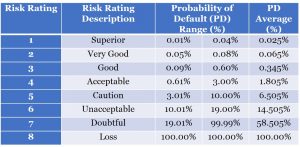INSIGHTS
IFRS 9 and Credit Unions – Part 2


1. Assessing whether there has been a significant increase in credit risk
In our first blog entry we introduced IFRS 9 and defined some of the key terms of that standard. In this second blog entry we look further at the application of that standard and the assessment of credit risk.
Under IFRS 9 credit unions are expected to assess whether the credit risk on a financial instrument has increased significantly since the financial instrument was first recognised or the last reporting date (year-end).
To assess whether there has been a significant increase in credit risk the credit union is expected to consider reasonable and supportable credit risk relevant information that is available without undue cost or effort on the part of the credit union.
Where the credit union concludes that there has been a significant increase in credit risk since the financial instrument was first recognised it must recognise lifetime expected credit losses on that financial instrument in its financial statements.
Lifetime credit losses do not need to be recognised if the credit union considers that the credit risk on the financial instrument is low at the reporting date. As guidance a financial instrument with an external credit rating of “investment grade” is considered to be a useful benchmark for a financial instrument that has low credit risk.
2. Implementation considerations
Credit unions should consider three main elements in assessing whether there has been a significant increase in credit risk for the purpose of placing a financial instrument in either stage 1,2, or 3.
The three main indicators that need to be considered are:
- Quantitative indicators
- Qualitative indicators
- Backstop indicators
Under IFRS 9 we must recognise stage 1 impairment losses when a new financial instrument is issued.
At each reporting date after the financial instrument has been issued, the credit union must assess whether credit risk in respect of the financial instrument has increased significantly.
If the credit risk has not increased significantly, the credit union continues to recognise only 12-month expected credit losses. However, if the credit risk has increased significantly then lifetime expected credit losses are recognised.
Once a financial instrument is in default it should be transferred to stage 3 and a loss allowance equal to the lifetime expected credit losses recognised.
2.1 Quantitative indicators
With the use of an internal scorecard or risk rating process the credit union can assess significant increases in credit risk in their portfolios. By definition, this would involve setting thresholds for determining what constitutes a significant increase in credit risk as the facility granted to the customer moves along the rating scale.
If a scorecard system exists, the credit union can then determine the probability of default associated with the ratings achieved at that point in time on the scorecard system.
As noted in our first blog entry, two types of probability of default have to be considered by the credit union under IFRS 9.
- Twelve-month Probability of Default: This is the estimated probability of default occurring within the next 12 months. This is used to calculate 12 months expected credit losses under stage 1.
- Lifetime Probability of Default: This is the estimated probability of a default occurring over the remaining life of the financial instrument. This is used to calculate credit losses under both stage 2 and stage 3.
The quantitative assessment of significant increases in credit risk for most credit unions could be derived using an internal scorecard or a defined risk rating process.
The following is an example that is given just for guidance as a starting point for each credit
union considering the need to create their own relevant scorecard.

- The credit score for the borrower (if the credit union uses credit scores).
- The loan to value (LTV) of the collateral. The higher the collateral potential the less likely the borrower is to default as he or she has more to lose. However, this is not a guarantee and a high collateral value on its own would not guarantee that an account has a low credit risk.
- The employment status of the borrower. A person who has lost his job is more likely to default because they have lost their employment income.
- Debt servicing ratios.
- Payment behaviour. Any missed or late payments, requests for a payment holiday or a restructuring could indicate a change in the credit risk and could result in a change in the risk rating.
- Life events such as divorce or death.
- Macroeconomic factors such as a rise in interest rates or an increase in the unemployment rate could increase default risk on a financial instrument.
2.2 Qualitative indicators
- Expectation of payment holidays (if allowed under the financial instrument) or covenant breaches.
- Changes in credit scores in the event that the credit union uses these to assess customers.
- Changes in the use of credit facilities including partial rather than full payment of obligations on a monthly basis.
- Events specific to the borrower including death, unemployment, bankruptcy, or divorce.


